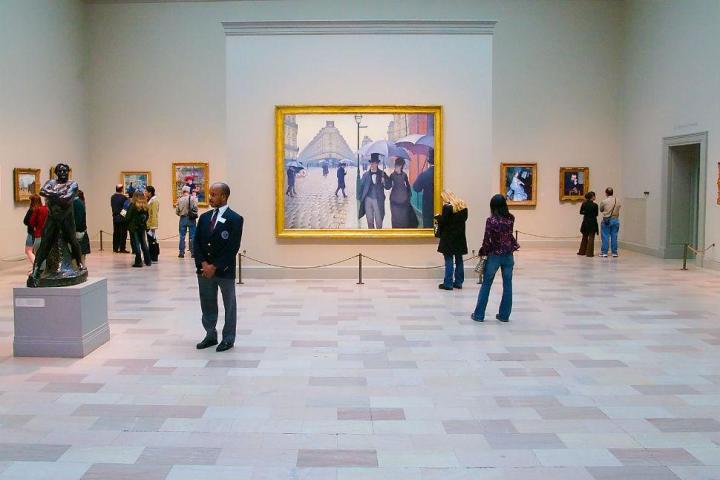
Auctions are built on drama. The thrilling scent of possibility hangs in the room. Sleek, precisely manicured men and women confidently throw up paddles, wagering thick stacks of cash on beautiful objects. A fast-talking, rambunctious auctioneer racks up millions in sales with every rapid-fire bidding war.
Of course, the Internet has changed this. Thanks to eBay, you can now bid on something from the comfort of your bed, pantsless, eating Doritos. (It’s the American dream, really.)
But boutique auction Phillips house is trying something that ties the cutting-edge digital art world to the glamour and deep pockets of real-life gallery-based art auctions. Working with Tumblr, Phillips is hosting Paddles On, an art auction that blends Internet culture with more old-school auctioning techniques.
They’re looking for the best digital pieces on Tumblr — the coolest GIFs, the most arresting net art — and once they decide what makes the cut, the art will be displayed at Phillips Gallery on Park Avenue in New York City. And it will also be sold.
Paddles On accepted submissions of all kinds, including software. The selected art will be auctioned off digitally, but select pieces will also be displayed in a special show at the gallery’s physical space in October. Artists will receive 80 percent of the proceeds, and the remaining 20 percent will be donated to Rhizome, a non-profit that supports contemporary technology art.
Since the auction isn’t until October 10, it remains to be seen how many art collectors will bite. People who pay for art do it for a number of reasons, but there is sometimes an underlying impulse of ostentatiousness, the desire to show off what now belongs to you, among high bidders. Since this art is digital, it makes the idea of ownership complicated.
Because really… who owns a GIF? And how?
Sites like Giphy and Tumblr hosts untold numbers of looping clips, ranging from visually beautiful pieces made specifically for the format to goofy snippets of popular TV shows. GIFs have (pun intended) embedded themselves in digital culture to a remarkable extent — Jesse Shapins, the founder of interactive storytelling service Zeega, refers to them as “cultural touchstones.” Since so many people share them around, and many contain snippets of material from television or film, it’s easy to get confused about the concept of ownership. But GIFs fall under the same copyright laws that other content does — “the same established rules of photography cover that of digital art,” explains Alex Chung, one of the co-founders of Giphy.
“The demand for intangible art pieces is likely to continue growing.”
In 2013, Art F City also sold GIFs at an art event, offering a limited-edition sapphire crystal USB drive with digital art from eleven different artists at the New Art Dealer Alliance (NADA) Fair. And an upcoming show called Net Worth created by artist Daniel Temkin will sell forgeries of net art created by other artists and sold via bit coins, in an effort to examine and expand the commercial viability of digital art “by fostering its shadow market” according to the event invitation. It’s an interesting way to conceptualize the difference between the physical art market and the digital one.
Even though GIFs that consist of snippets from pop culture will likely continue to float around the Internet as freely used digital pieces, when it comes to the art world, an entire market is emerging. With some of the most innovative, creative artists choosing digital mediums, demand for intangible art pieces is likely to continue growing.

